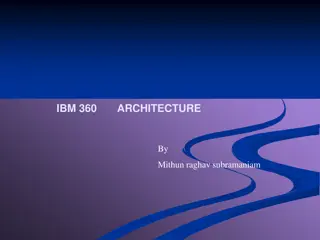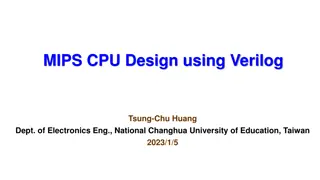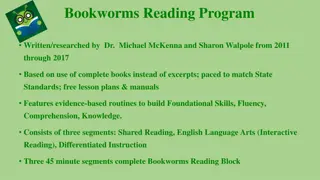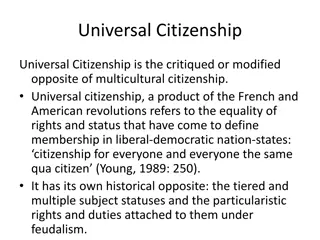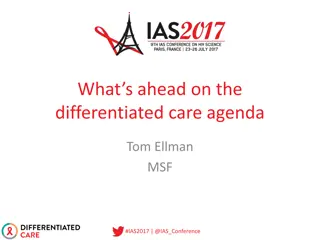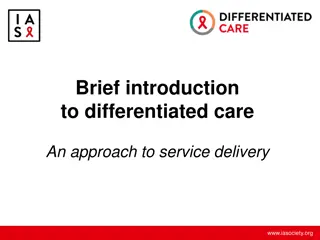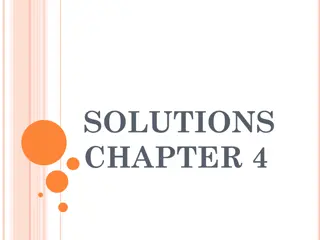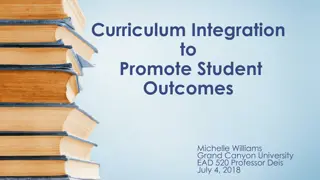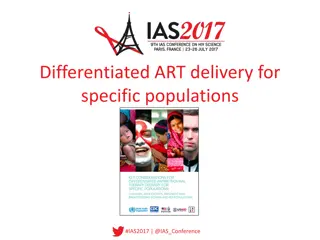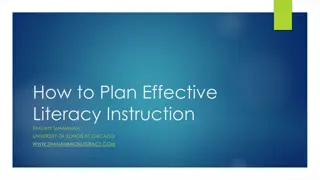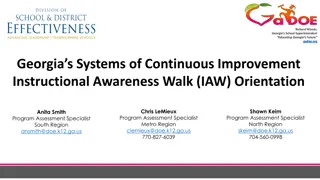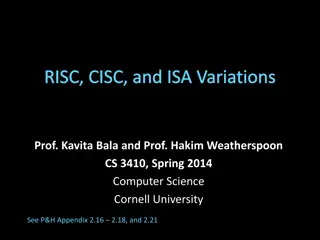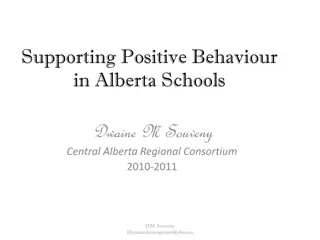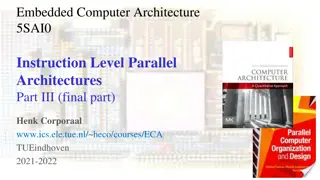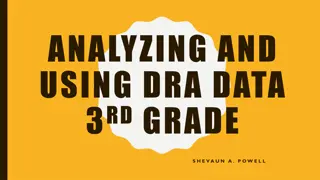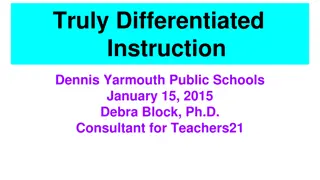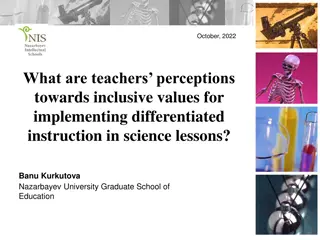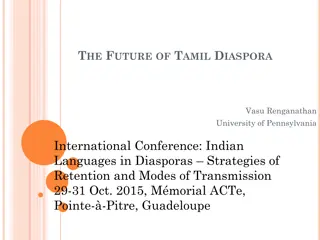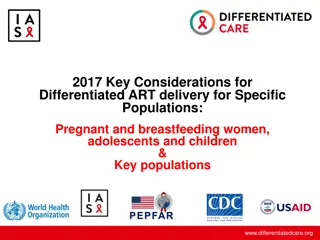Differentiated Instruction Basics
Differentiated Instruction Basics focus on catering to students' diverse learning styles and abilities in the classroom. It involves a student-centered approach that considers individual interests, readiness levels, and preferred modes of learning. This method ensures that what a student learns, how they learn, and how they demonstrate their learning match their unique characteristics and needs. Through this approach, educators aim to move away from cookie-cutter assignments and assessments towards personalized and effective teaching strategies.
Download Presentation

Please find below an Image/Link to download the presentation.
The content on the website is provided AS IS for your information and personal use only. It may not be sold, licensed, or shared on other websites without obtaining consent from the author.If you encounter any issues during the download, it is possible that the publisher has removed the file from their server.
You are allowed to download the files provided on this website for personal or commercial use, subject to the condition that they are used lawfully. All files are the property of their respective owners.
The content on the website is provided AS IS for your information and personal use only. It may not be sold, licensed, or shared on other websites without obtaining consent from the author.
E N D
Presentation Transcript
Connie Papineau UNE 610 July 28, 2009
A little bit of instructions first! To access all underlined hyperlinks throughout this presentation; Highlight link, right click then select open hyperlink. Please Enjoy!
Differentiated Instruction Basics Student centered instruction Teaching strategies focus on students multiple learning styles A way of cognitively approaching teaching and assisting learning for all students in the multi- ability classroom
Carol Tomlinson defines differentiated instruction as--- The process of ensuring that what a student learns, how the student learns, and how the student demonstrates what he/she has learned matches that particular student s interests, readiness level and preferred mode of learning. Highlight hyper link right click. Select open hyperlink.
What We Have Done Most schools have cookie cutter students Creating cookie cutter assignments Taking cookie cutter assessments (Tomlinson, 2001)
NO NO NO MORE!
Multiple Intelligences and Learning Styles An intelligence is the ability to solve problems, or create product s that are valued in one or more cultural settings. Frames of Mind, 1983 Howard Gardner
Howard Gardner claims that all human beings have multiple intelligences. These multiple intelligences can be nurtured and strengthened, or ignored and weakened. He believes each individual has nine intelligences:
What does the Theory of Multiple Intelligences (M.I.) Mean to the Student? Verbal-Linguistic Intelligence reading, seeing, hearing words, speaking, writing, discussing, & debating Mathematical-Logical Intelligence working with patterns and relationships, classifying, categorizing, working with the abstract
Musical Intelligence melody, singing, listening to music and melodies Visual-Spatial Intelligence working with pictures, colors, visualizing, drawing
Bodily-Kinesthetic Intelligence toucing, moving, processing knowledge through bodily sensations Interpersonal Intelligence sharing, comparing, interviewing, cooperating.
Intrapersonal Intelligence working alone, doing self paced projects, having space, reflecting Naturalist Intelligence working in nature, exploring things, learning about plants and natural events
Existential Intelligence -- sensitivity and capacity to tackle deep questions about human existence, such as the meaning of life, why do we die, and how did we get here *http://www.thirteen.org/edonline/concept2class/mi/index.html Highlight all hyperlinks, right click. Go to open hyperlink to explore web sites
What does the Theory of Multiple Intelligences (M.I.) Mean to the
How can I include numbers, classifications, critical-thinking and calculations in my lessons? When can I include reading, writing, and speaking in my lesson? How can I include visuals, colors, art, graphs, and pictures in my lessons? Can I put music, sounds, and rhythms into a lesson?
Where can I put movement, exercise, drama, and crafts into a lesson? Where can I include private learning into a lesson? How can I include group work, peer sharing, and discussion into a lesson? Where can mother nature fit into a lesson?
Ok, so you know your students learning styles, now what? Tomlinson (Tomlinson, 2001) suggests that you begin by incorporating a few different learning styles that you are comfortable with and you will hit many of your students preferred styles. Visual Auditory Kinesthetic Whole to part Part to whole
Focus on one thing at a time to change in your curriculum Lesson Design- team teaching, lessons incorporating several MI theories, student opinions valuable Interdisciplinary Units- Projects created with differentiation in mind with something for all with the end learning results the same Assessments that allow students to show what they have learned Mastery- gaining mastery of a skill or concept allows the student to own "it *(Guignon, 1998)
Use student centered lessons and student choices in your lesson when giving choices (these are just a few) Incorporate web quests I-searches Design-a-day Group investigation
Use multiple assessments before, during, and after lessons Pre-assessments: this is essential for planning and diagnosis of student needs (Chapman 2005) What does that student know? Do the students have any experiences in the area? What skill level is the student? What is the student s overall readiness?
Pre- assessment strategies Informal Response cards High to low cards Agree/disagree charts Survey Formal Open ended questions Multiple choice True false Matching
A Few On Going Assessment Strategies Post it notes on various answers in text Game pieces placed on boards Cash in- students write three words on cash register tape and pass it on Note taking Highlighting Graphic organizers Label it Concrete shape fill ins
Final Assessments Rick Sciggins Assessment linked to standards This will link you to a podcast transcript that defines standards based final assessments . Tomlinson believes that traditional testing is a system that can be changed if everyone (parents, students, and staff) are on the same page. Tomlinson 2001 Highlight all hyperlinks, right click. Go to open hyperlink to explore web sites
Differentiated Final Assessments Travel Brochures Puppet Shows Newspaper Article Interviews Letters to the editor Poem writing Authentic Recipes Teach a class Design a web page Complete a web quest
Now What? Great, you have now taken the first steps toward differentiated instruction in the classroom! But wait; there are some great sources to help you along the way.
Learning Styles Inventory Resources learning-styleonline.com/inventory/questions learning Styles Quiz Printable Learning Styles Inventory These are just a few. You can also find many that you can copy for your students. Highlight the hyperlinks, right click, open hyperlink.
Student Interest Inventory Getting to know your students is very important. What do they like? What do they do in their free time? Here is a very user friendly Student Inventory that you can print and keep handy all school year long STUDENT INTEREST INVENTORY LINK Highlight hyperlink ,right click, select open hyperlink.
STUDENT INTEREST INVENTORY Adapted from: Holzschuher (1997).How to Handle Your Classroom. Name______________________ Date______________________ 1. My favorite school subject is _______________________________. 2. My friends are __________________________________________. 3. I like to read books about __________________________________. 4. Things I like are _________________________________________. 5. My favorite color is _______________________________________. 6. I would like to take a vacation to ____________________________. 7. In my free time I like to ____________________________________. 8. My favorite food is _______________________________________. 9. My favorite song or movie is _______________________________. 10. What I liked least about school is ____________________________. 11. If I had 50 dollars, I would _________________________________. 12. In the future, I would like to be a ____________________________. 13. If I could invent something to make the world a better place it would be _______________________________________________________. 14. The person I most admire is ___________________________. The reason I admire this person is because__________________________. _________________________________________________________. 15. Things I dislike are ______________________________________. 16. My favorite sport is _______________________________________. 17. My hobbies are __________________________________________.
The following two slides will have basic lesson plan designs for differentiating your lessons
Pyramid Diagram Task 1 Task 2 Task 3 Task 4
Subject / Name of Activity or idea:(Grade levels): Rationale: (Include Benchmarks, if applicable) DI Strategy: (i.e., Cubing, contracts, tiered lesson) Differentiate What? (Content, Process, and/or Product) Differentiate How? (i.e., Readiness, interest and/or learning profile) Resources Needed: Teacher Preparation: Explanation: (Include approximate time to complete project, grading rubric and any forms or worksheets, if applicable.) Available at http://www.tandl.leon.k12.fl.us/lang/Lessontemplate.html Highlight link right click. Select open hyperlink.
Differentiated Instruction Very helpful web sites to explore Differentiated Instruction Scavenger Hunt Can Novice Teachers Differentiate? Yes! DI extras Differentiate: Why Bother Classroom example of Differentiation Differentiation in the classroom example 2
References Guignon, A. (1998). Multiple Intelligences: A theory for Everyone. Retrieved July 21, 2009, from Education World: http://www.education- world.com/a_curr054.shtml Tomlinson, C. A. (2001). How to Differentiate Instruction in Mixed Ability Classrooms (second ed.). 2001: ASCD Publications.



